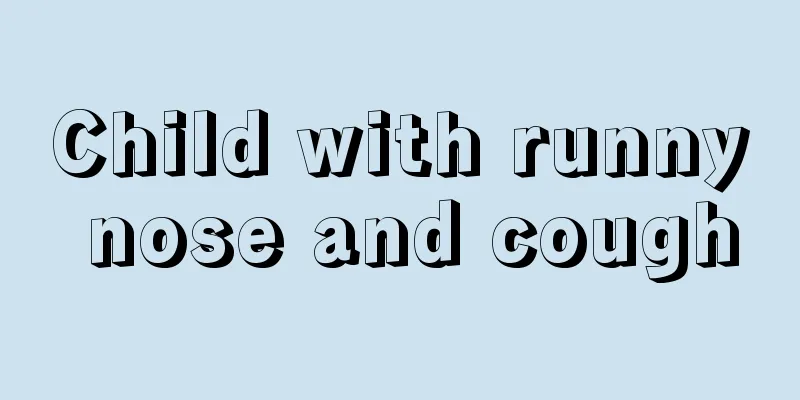Prevention methods of hand, foot and mouth disease in kindergarten

|
The incidence of hand, foot and mouth disease is on the rise, which makes many parents panic. As a place where children live, the prevention work of kindergartens cannot be ignored. Many friends want to know how to prevent hand, foot and mouth disease in kindergartens. Here, we will talk about the issues that everyone is concerned about. I hope that kindergartens can learn from it, and I also hope that young parents can rest assured. Then let’s take a look at the following content introduction! Before introducing the prevention of hand, foot and mouth disease in kindergartens, let us first tell you what hand, foot and mouth disease is! Hand, foot and mouth disease is an infectious disease caused by enterovirus. There are more than 20 types (types) of enterovirus that cause hand, foot and mouth disease, among which Coxsackievirus A16 (Cox A16) and enterovirus 71 (EV 71) are the most common. It is more common in children under 5 years old, with symptoms such as mouth pain, anorexia, low fever, and small blisters or ulcers on the hands, feet, mouth, etc. Most children will recover on their own in about a week, while a few children may develop complications such as myocarditis, pulmonary edema, and aseptic meningoencephalitis. The condition of some seriously ill children progresses rapidly, leading to death. Currently, there is a lack of effective treatment drugs and the main treatment is symptomatic. Prevention work mainly focuses on: 1. Do a good job of publicity for parents of children, and ask them not to send their children to nurseries or kindergartens if they find that their children have fever or rash at home, but to go to the hospital for medical treatment in time. Children can only be admitted to daycare centers or kindergartens until they have recovered or the non-communicable disease has been confirmed. 2. Strengthen morning check-ups. If a child is found to have a fever or rash, ask parents to take the child to the hospital immediately. Health care teachers should wash their hands thoroughly or perform quick hand disinfection between contact with different children during examination. 3. Strengthen full-day health (medical) observation for children attending daycare centers and kindergartens. Once a child in the kindergarten is found to have a fever or rash, he/she should be immediately separated from other children and placed in an isolation (observation) room. Parents should be notified in a timely manner to take the sick child to the hospital for treatment. 4. When a child with fever or rash is found, the toys, bedding, tables and chairs in the affected class should be disinfected immediately. 5. Strengthen the cleaning and disinfection of hands of children, staff, etc. Ventilation in classrooms and dormitories should be improved, and classrooms with poor ventilation should be supplemented with mechanical ventilation. 6. Strengthen the cleaning and disinfection of environmental surfaces, toys, toilets, etc. that children frequently come into contact with on a daily basis. 7. According to regulations, when a child is found to have hand, foot and mouth disease, it must be reported to the health and education departments in a timely manner. Hand, foot and mouth disease must be taken seriously by everyone, especially in kindergartens where children live. Ensuring the physical and mental health of children requires everyone's attention and efforts. This is the end of the introduction to disease prevention. I hope it will be helpful to everyone. I hope young parents can pay attention to disease prevention! |
<<: Why can't my child straighten his fingers?
>>: What are the recipes for cooking for babies?
Recommend
What causes precocious puberty?
Precocious puberty has already occupied most of o...
Are gastrointestinal flu symptoms serious in children?
In fact, the so-called stomach cold in children i...
Seven-month-old baby sweats a lot on his head when sleeping
Children are in a period of rapid growth and deve...
What are the early symptoms of epilepsy in children?
Epilepsy is what is medically known as epilepsy. ...
What to do if your child coughs up blood
Children's colds are something that worries p...
What kind of daily care is needed for babies suffering from eczema?
Nowadays, many babies suffer from skin diseases s...
What should you pay attention to in your baby's diet?
The baby's body is very fragile, so the baby ...
How to extract a child's tooth
After birth, children begin to develop gradually ...
Toothache in children
Children always do not pay much attention to clea...
What to do if the child's rash does not come out
It is a very common symptom for children to have ...
What are the symptoms of a newborn baby being stretched out?
Anyone who has taken care of a baby knows that it...
True myopia and pseudomyopia
After the appearance of true myopia and false myo...
What are the symptoms of a child having a fever and chills?
It is very important to pay attention to children...
What are the causes of cerebral atrophy in children?
Infantile brain atrophy is also known as spinocer...
What should I do if my one-month-old baby has not defecated for three days?
The baby's health is a matter of great concer...









